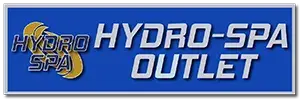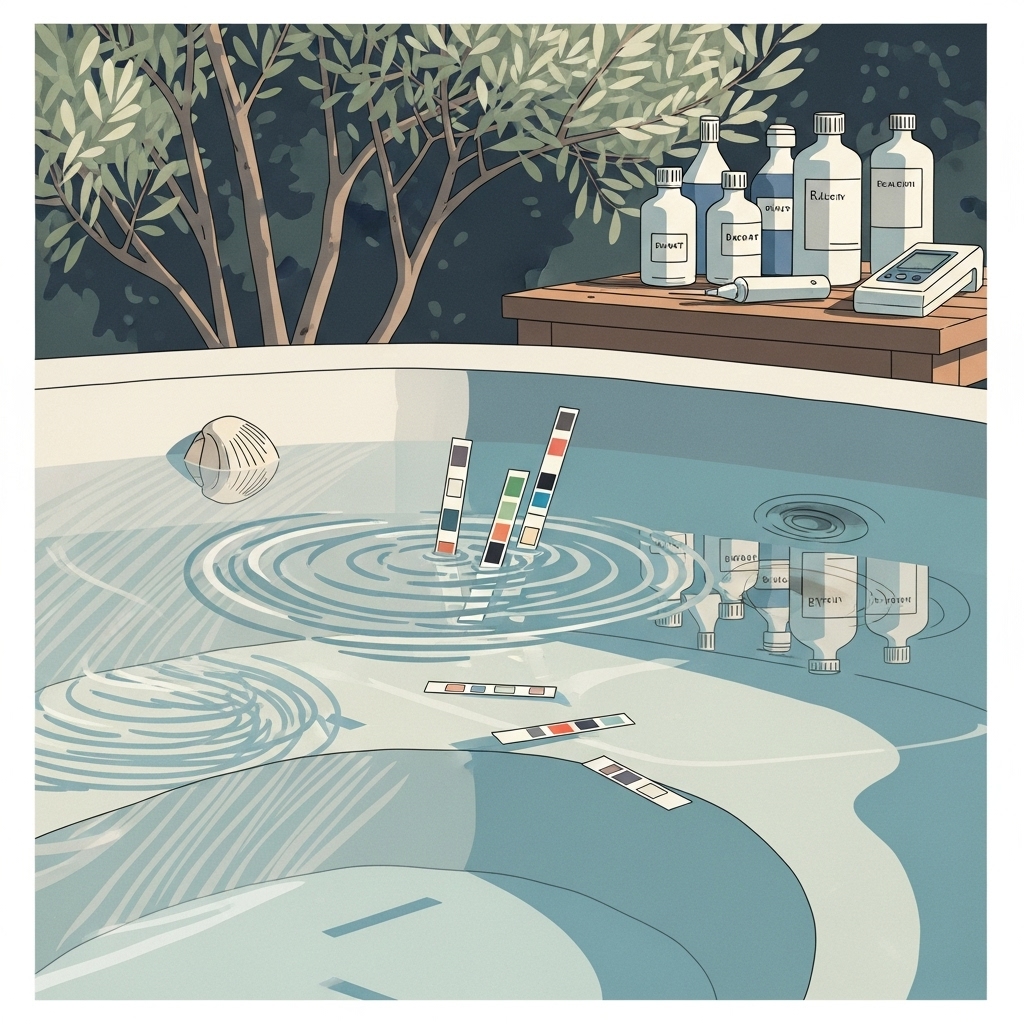Water balance is the quiet architecture behind every great soak. In Woodland Hills, where warm afternoons, cool evenings, and occasional Santa Ana winds shape daily life, paying attention to your spa’s chemistry is what turns maintenance from guesswork into an easy ritual. If you’ve ever seen water drift from crisp and glassy to slightly dull after a windy day, or noticed that long jet cycles nudge your pH upward, you’ve already witnessed how environment affects balance. The good news is that a thoughtful approach, tuned to our local conditions and your household’s habits, keeps chemistry stable and the spa inviting. Early on, many homeowners find that a little expert guidance or periodic hot tub maintenance support helps them develop a confident, repeatable routine.
Think of chemical balance as an ecosystem with a few core players: pH, alkalinity, calcium hardness, and sanitizer. Each influences the others, and when one drifts far, the whole system asks for more attention. The aim is not perfection on paper but harmony in practice—a range where water feels comfortable, sanitizer works efficiently, and equipment stays protected from scale or corrosion. When you tune these variables to your spa’s behavior and to the realities of Woodland Hills water and weather, you get stability that requires only small, steady inputs.
pH and Alkalinity: The Stabilizing Duo
pH tells you whether water leans acidic or basic, and alkalinity acts as a buffer that keeps pH from swinging wildly. In spas, aeration from jets and waterfalls tends to push pH upward over time, which is why regular, gentle corrections are normal. In Woodland Hills, warm afternoons encourage longer soaks with active jets, so a weekly check of both pH and alkalinity sits at the center of a balanced routine. When alkalinity is in its comfort zone, pH responds predictably to your adjustments. If alkalinity drifts low, pH becomes jumpy; if it drifts high, pH resists your guidance. Finding the sweet spot for your particular spa transforms maintenance from chasing numbers to making small, effective nudges.
Observation matters as much as test results. If water feels sharp on the skin or your eyes feel irritated, you may be seeing the effects of a pH that has wandered or sanitizer that’s struggling. Adjust gradually, give the water time to circulate, and retest with patience. Over time, you’ll learn how your spa reacts to common events—a weekend of guests, a windy afternoon, or a refill—and your corrections will become second nature.
Calcium Hardness and the Woodland Hills Tap
Our local source water tends to carry more calcium, which has two main effects. It contributes to scale formation if balance drifts and it influences the “feel” of the water. When calcium sits in a comfortable range relative to pH and alkalinity, water protects your heaters and jets while still feeling pleasant. After a refill, pay special attention to calcium and alkalinity together; this is when you set the stage for months of easy care. If you overshoot an adjustment, don’t panic. Move slowly. Simple, measured changes, followed by circulation and retesting, keep you on the path to balance without the frustration of overcorrection.
Scale and foam are common signals that the chemistry wants attention. Scale shows up as roughness on fittings or a film near the waterline, especially after water has evaporated. Foam can arise from residual soaps on swimwear or from surfactants in the water. While both can be managed chemically, they also respond well to behavioral tweaks: a quick rinse before soaking, careful handling of the waterline, and steady filter care. Chemistry and habits work hand in hand.
Sanitizer Efficiency and Oxidation
Sanitizer does the daily work of keeping the water hygienic. For it to be effective without being harsh, pH and alkalinity must be supportive. When balance is on point, sanitizer acts like a steady hand, not a sledgehammer. After heavy use—family in town, a weekend of celebrations—or after a gusty day that blew debris into the spa, an oxidation treatment helps remove what sanitizer would otherwise have to wrestle with. This resets the water’s clarity and keeps the sanitizer in its most efficient zone. It’s a small habit with a big payoff in how the water looks and feels.
Different sanitation methods—chlorine, bromine, salt systems with generators, and supplemental ozone or UV—have their own rhythms. None is one-size-fits-all. Choose a system that matches how you soak and how much daily input you prefer. What matters most is consistency. Once you know your system’s language, you’ll recognize when the water is asking for a nudge and when it’s simply reflecting a short-term spike in use.
Temperature, Aeration, and Real-World Use
Temperature and air play subtle roles in balance. Warmer water influences how quickly sanitizer is consumed and how gases exchange at the surface. Frequent aeration—especially with powerful jets—can accelerate pH rise. You’ll see these effects most clearly during long summer evenings when the spa becomes a social hub. Anticipate a gentle correction after busy nights, and consider running a brief, open-cover jet cycle after gatherings to release volatile compounds before you close up. These small, practical steps keep chemical adjustments minimal.
Location matters, too. A spa perched near a breezy hillside above the Valley may invite more dust; a spa shaded by trees near the foothills might see periodic bursts of pollen. Both scenarios ask the same thing of you: be ready with a short, thoughtful routine. Skim, test, adjust, and rinse filters. Within a day, stability returns when you respond early and calmly.
Filters: Chemistry’s Best Friend
Good filtration is the quiet enabler of chemical balance. When water moves freely through clean filters, sanitizer doesn’t have to fight through haze and debris. In Woodland Hills, filter care pays extra dividends because of our occasional wind and generous outdoor living. Build a rhythm: light rinses on a predictable schedule, deeper cleans at sensible intervals, and a rotation if you keep a spare set so each filter can dry thoroughly. Drying helps the media maintain its structure and improves performance over time. Clear water and steady chemistry are the inevitable result.
Filters also serve as an early warning system. If jets feel less lively or pumps sound strained, look to the filters first. They’re often the simplest, fastest fix and a reminder that mechanical and chemical health are intertwined.
Refills and Resets: Setting the Stage
Eventually, every spa reaches a moment when the water has absorbed enough dissolved solids that balance feels like more effort than reward. That’s your cue for a reset. Choose a time that fits your schedule, and use the refill as your opportunity to establish a strong foundation. Because our tap leans hard, test and adjust alkalinity and calcium with care. Bring pH into harmony next, then confirm sanitizer. Moving in this sequence reduces the chance of chasing your tail. Once set, the spa will often sail smoothly for weeks with only minor nudges.
Take advantage of the reset to give the shell a thorough clean, refresh pillows, and condition the cover if recommended by the manufacturer. A once-over on seals, jets, and fittings ensures there are no small leaks or drips that would complicate your work later. The whole experience should feel calm and methodical, a pleasant hour that pays off in months of easy, enjoyable soaking.
Small Habits That Protect Balance
Simple choices add up. Ask family and guests to rinse quickly before soaking, especially after a day outdoors. Keep lotions and oils off skin right before you get in. Open the cover with care, and close it promptly after you’re done. Between those gentle practices and a weekly chemistry check, you’ll find the spa stays beautifully stable even through Woodland Hills’ variable weather. When winds pick up, pair your chemistry check with a filter rinse; when the Valley is calm, you can relax into your normal cadence.
It’s also helpful to keep notes. A small log on your phone—what you adjusted, any wind events, big gatherings—turns into a pattern within a few weeks. Those patterns teach you how to anticipate needs, which lets you make tiny corrections before the water asks loudly for help.
When to Seek a Second Set of Eyes
Sometimes questions pop up: a test reading that seems odd, a foam issue that lingers, or a sequence of windy days that leaves the water slightly off. This is when a quick conversation or a seasonal tune-up pays for itself in confidence. There’s no need to struggle alone; curated advice on hot tub maintenance can simplify your routine and help you reset with clarity. Once your foundation is solid, those small, steady inputs become all you need.
What causes pH to drift in my spa?
The most common drivers are aeration from jets and waterfalls, temperature, and the normal byproducts of soaking. In Woodland Hills, long evening soaks and social use can nudge pH upward. Balanced alkalinity and small, patient adjustments keep pH in line.
How does Woodland Hills’ water hardness affect my spa?
Harder source water means you should pay attention to calcium and alkalinity after refills. Properly balanced, it protects equipment from corrosion and reduces the risk of scale. Once dialed in, it actually supports a stable, low-effort routine.
Why does my sanitizer seem to work better some weeks than others?
Sanitizer efficiency is tied to pH, alkalinity, temperature, and bather load. After busy weekends or windy spells, give the water a quick oxidation treatment and confirm balance; you’ll see sanitizer performance snap back.
How often should I clean my filters?
Rinse regularly and plan deeper cleans at sensible intervals, with extra attention after wind events or heavy use. Clean filters keep circulation strong and reduce the workload on your chemistry.
When should I change the water entirely?
When balance becomes harder to achieve, clarity fades faster, or the water feels “tired,” it’s time for a reset. Align it with your schedule so you can focus on getting the new fill perfectly balanced.
If you want crystal clarity with less effort and a routine tuned to Woodland Hills’ real-world conditions, now is a great time to get tailored guidance or schedule seasonal care. For steady results and peace of mind, tap into trusted hot tub maintenance and enjoy water that feels as good as it looks.

